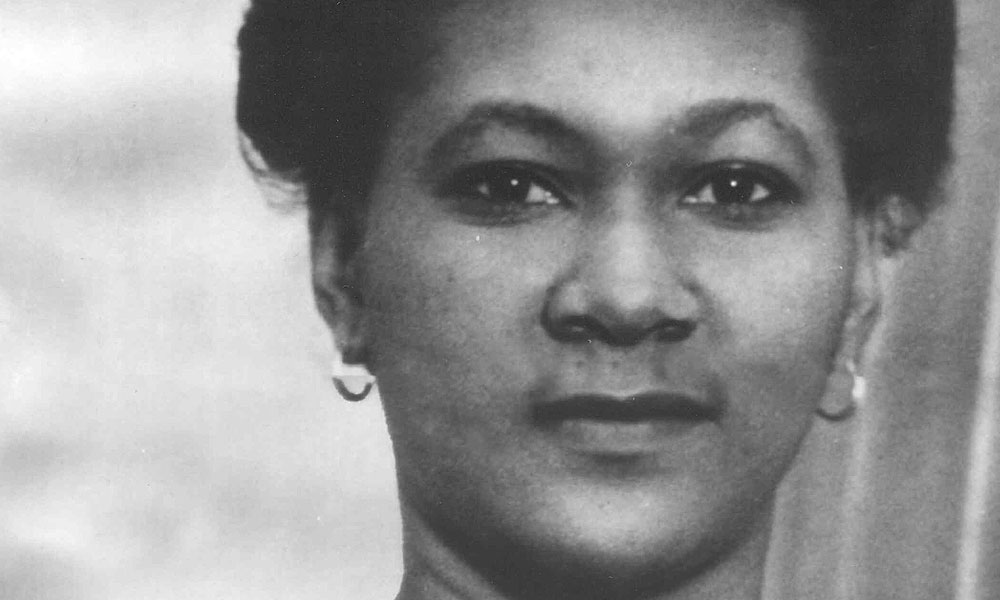Euclid Hanley
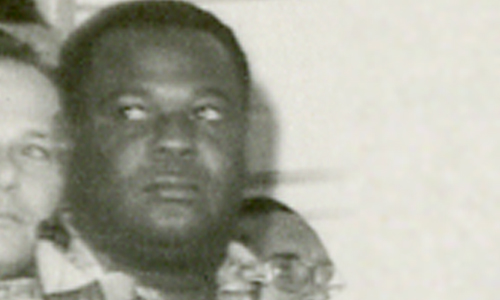
Euclid Hanley was born on the 22 May 1940 in Butler’s Village, Nevis and moved to St. Kitts at a very early age. He grew up in the household of the Stanleys who owned a grocery on the north western corner of Central and College Street and lived above it. Eventually he found work at City Drug Store until he was ready to start his own business. His johnny cakes, patties, fried fish and back and neck were relished by a large clientele because they were good, reasonably priced and because Euclid ‘s cheek and sense of humour were always entertaining. His bubbly and cheerful personality made him friendships that transcended the usual barrier of small island politics.
Hanley catered for workhops and conferences of the Labour Party and the Union often at concessionary prices especially in the 1980s when the abolition of the closed-shop left the Union short of funds. Workers striking for their workplace rights had an ally in him for besides providing meals for them on the picket lines, he was generous to them when they visited his shop. Unemployed women were, from time to time, employed by him even though he could not really afford to take on additional staff simply to improve their chances of obtaining a visa to travel to the US.
Euclid Hanley was a sports fan. He founded and managed the Village Superstars football team and was an accomplished referee of the game. He also actively encouraged netball, athletics and cricket and collected magazines on a variety of sports. He could accurately predict the picks for the West Indies cricket team and similarly predicted the team members of India, England, Australia if they wanted to beat the West Indies. While Hanley did not excel in these fields but he was an avid player of cards, dominos, chess and especially bridge.
In the later years Hanley was a supervisor of the School Meals Preparation Centre. In 1996 he was honoured with a well-deserved Independence Award for his contribution to sports, community affairs and sports.
Euclid Hanley died on the 5 November 2003, an unpretentious man with a big smile and a generous heart.
Joseph Matthew Sebastian
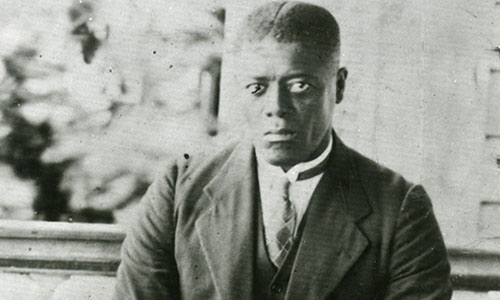
J M Sebastian was born at Johnson’s Point in Antigua in 1893. He was the first of five children born to John Sebastian and his wife Sarah. His education lead young Joseph to become a pupil teacher then at the age of fifteen he attended the Mico Training College for Teachers in Jamaica from which he graduated with first class honours.
Sebastian returned to his native Antigua but soon after the Anglican Church assigned him to be the Headmaster of the St. George’s Anglican Elementary School in Basseterre, St. Kitts. Within the Anglican Church, he was a lay reader, a member of the Vestry and member of the choir. He also served at St. Peter’s and at Estridge.
It was in St. Kitts that Joseph Sebastian met and, in 1913, married Inez Veronica Hodge. Together they had twelve children. But the quiet life of the Anglican Primary School teacher was soon abandoned for a more colourful if sometimes turbulent political career. On the death of Frederick Solomon, Joseph Sebastian resigned his post as teacher to become President of the Universal Benevolent Association (UBA) and it was under his leadership that the organization grew increasingly moderate in outlook and acquired a printing press that gave it a far-reaching voice. The Union Messenger laid special emphasis on the problems faced by the disenfranchised population of St. Kitts and Nevis - housing, health and sanitation, education, exploitation of children. Sebastian gave the newspaper his undivided attention and left the running of the UBA itself to Joseph Nathan. In 1931 Sebastian bought out the rights to The Union Messenger and formed a limited liability company called The Progressive Printery to run the paper. Sebastian also edited a monthly magazine called The Caribbean Trawler.
The end of the 1920s brought with it the great depression and labour unrest. In 1930 there was a strike at the sugar factory and in 1932 estate workers staged a one day strike forcing the factory to stop grinding. Both incidents highlighted the need for a more dynamic organisation. The leadership was to come from the middle class. In 1932 the Workers’ League was formed with Thomas Manchester as President. Sebastian was a founding member of the League and a member of its Executive Council. The Messenger continued to carry articles that raised concern for the plight of the working class. It also made information available about wages. When in 1935, the paper carried an item from the UBA about wage increases for sugar workers, the authorities blamed Sebastian and Nathan for the disturbances that followed. It was even thought that one of the men who was killed at Buckley's had been mistaken for Sebastian who looked a lot like him.
In the 1937 election, Sebastian and his assistant editor, Joseph France, were foremost among the League’s campaigners. Others included William ‘Doc’ Davis, Charles Halbert and Isa Bradley. The campaign resulted in a victory for the League with Thomas Manchester and Edgar Challenger being elected to the Legislative Council.
Soon after the election, Marcus Garvey visited St. Kitts. J. Matthew Sebastian had prior notice of the Jamaican’s intentions. On the 10th June, Garvey had written to Sebastian asking him to hire halls in which he could address an audience and to arrange for the sale of tickets at 1/- and 1/6 a seat in order to defray expenses. Worried by the volatile socio-political situation in St. Kitts, Sebastian took the letter to the Administrator. Both agreed not to publicise the visit. When Garvey arrived in November, Sebastian was at the port to welcome him. The Administrator felt that his presence was “a service” in the public interest.
Sebastian himself was elected to the Legislative Council in 1940 as a candidate of the Workers League and for a second time in 1943. He was also elected to the Federal Legislative Council of the colony in that same year. In 1940, The St. Kitts-Nevis Trades and Labour Union was launched. Sebastian was among those who assisted in its formation. A few weeks later, in April of that same year, the Sugar Factory workers went on strike. Sebastian, seeing the difficulties they were going to have to face, appealed to them to return to work. The response of the workers was very antagonistic. He was shouted down and had to be lead away for his own safety. However in 1942 Sebastian succeeded Manchester as President of the Workers’ League and in 1943, with an impending general strike and following Challenger’s resignation from the Union, he once again found himself at the forefront of the Union leadership with Joseph France as the General Secretary. However, Sebastian’s moderate leadership was not to last long and in 1944 he resigned in opposition to another strike called by the Executive of the Union.
Joseph Matthew Sebastian died at the Cunningham Hospital on the 25th June 1944.
Zenaida Katzen
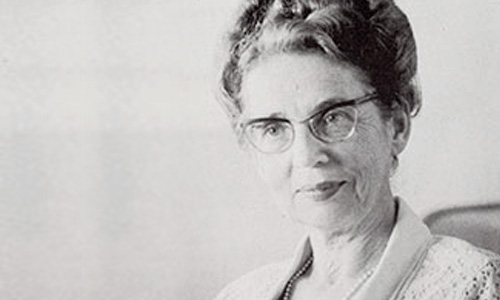
Zenaida Katzen was born in Eastern Siberia in 1911 to a Russian Orthodox mother and a Jewish father. Due in great part to her father’s allegiance to Tsar Nicholas II, her family had no choice but to flee Russia or face certain death at the hands of the Bolsheviks as the October 1917 Russian revolution advanced to the Russian Far Eastern town of Nikolaevsk-na-Amur. The family took refuge in Shanghai, China.
After completing high school and university in Paris, Zenaida returned to Shanghai where she taught school, got married and gave birth to a son in 1937. When the Japanese invaded China in 1939, the family fled once again. This time to Chile.
She founded a very successful school in the small town of La Serena in northern Chile in 1946.
In January 1961, at the age of fifty, she arrived in St. Kitts, accompanied by her mother and her aunt, in order to fill a Mathematics vacancy at the St. Kitts-Nevis-Anguilla Grammar School. Before long she switched to teaching French and Spanish and by the time she retired in the late 1970s, she had revolutionized the way modern languages were taught in the region.
For the rest of her life, and the lives of her mother and aunt, St. Kitts was the last stop on their long journey across the globe. She would become a part of the fabric of life on the island. The contribution she has made to the education of youngsters could only be described as immeasurable, frequently procuring financial resources from a wealthy family in Hong Kong to pay for students’ school uniforms, books, language trips abroad and university scholarships. She knew all of the important people on the island and knew how to get things done.
An animal lover, her home was always filled with a menagerie of cats and dogs. In her later years she could be seen making daily trips to Conaree to feed a collection of feral cats and dogs.
Along with her mother and her aunt, all three members of her family are buried in Springfield cemetery, Basseterre.
____________
FROM SIBERIA TO ST. KITTS: A Teacher’s Journey by Ira Simmonds is the biography of Zenaida Katzen. The author was one of her former students. He received research help from the St. Kitts National Archives as well as the Hong Kong Heritage Project (HKHP),
After five years of research which took him to Shanghai, St. Kitts, Hong Kong, Paris, Santiago de Chile and La Serena, Chile, Simmonds is able to weave the disparate threads from Russia, China, Chile, France, and St. Kitts-Nevis into a vibrant tapestry revealing a surprising and exceptional woman. Stepping outside of the spinster-teacher archetype, Katzen’s story is one of a complicated, fiercely independent woman whose decades of unwavering dedication and commitment to the education of children across the globe belie an intriguing, unpredictable and, at times, inexplicable personal life.
FROM SIBRIA TO ST. KITTS: A Teacher’s Journey by Ira Simmonds will be published in February 2018 and available for purchase on Amazon in paperback and eBook format.
Elvis "Star" Browne

Elvis Browne was born on the 9 February 1961 to Margaret Browne. He grew up in La Guerite Village and received his early education at De Village Primary School before moving on to high school and then to the Technical College where he received a diploma in Carpentry, a trade he practiced for a number of years.
Browne was an accomplished track and field athlete, a competent cricketer but it was his passion for football that made him stand out in the sporting arena. He played for Basseterre High School in the 1970s, for Village Super Stars wearing the number 9 jersey and for the St. Kitts Nevis National Team. Browne may have been required to prove himself on the field but he was a team player and an inspiration to the other footballers. He understood the movement of the ball, the game’s challenges as well as its finer points and complexities and its history.
Football was Star’s passion. It became his job and his career. What he could not achieve as a player, Elvis ‘Star’ Browne achieved as a coach. He coached at the school, grass roots and international levels. He was head coach of the National Team from 2002-2004. He was also the coach of the Women’s National team.
He recognized talent and encouraged youngsters both male and female and encouraged parental participation. Star worked for the Department of Sports but his involvement did not keep office hours. Elvis started the summer youth academy which was later renamed in his honour “LIME/Elvis “Star” Browne Football School of Excellence” which helped in the development of several young footballers. He also started a photography exhibition at the Fort Thomas Hotel which he moved to the Sports Bar at Frigate Bay when the hotel closed. Like a small Hall of Fame, it gave encouragement to those already in the game and inspired potential footballers.
‘Star’s’ generous personality, his respect for both authority and opponents, his ability to spot talent and nurture it, and his ability to relate and talk to children, made him an inspiring coach and a great ambassador of the game of football and sports in general. Lorna Callender said this about him “It was his vision to take football beyond the ordinary that made him stand out as a coach, as a person and as a friend. He was fun to be around. He worked hard and he played hard and his contribution will never be forgotten for it is acknowledged that he went beyond the call of duty. His enthusiasm was infectious.”
Elvis ‘Star Browne died on the 20 September 2011 at the age of 50.
Donald Lloyd Matheson

On the 24th January 1914, Donald F. Matheson and his wife Charlotte Matheson nee Mercer welcomed a son into the world. They called him Donald Lloyd. The world that the Mathesons lived in was one of privilege and young Lloyd, driven by a desire to learn, moved without much difficulty from the St. Kitts Grammar School to West Buckland School in Devon, England.
The young man returned to St. Kitts in 1931 and joined the Civil Service as a teacher at his old school. He taught History and was the games master and Cadet Corps Commander. In 1943 he was recruited into the Administration where he served first as Clerk to the Administrator and Clerk to the Council and then as Assistant to the Administrator.
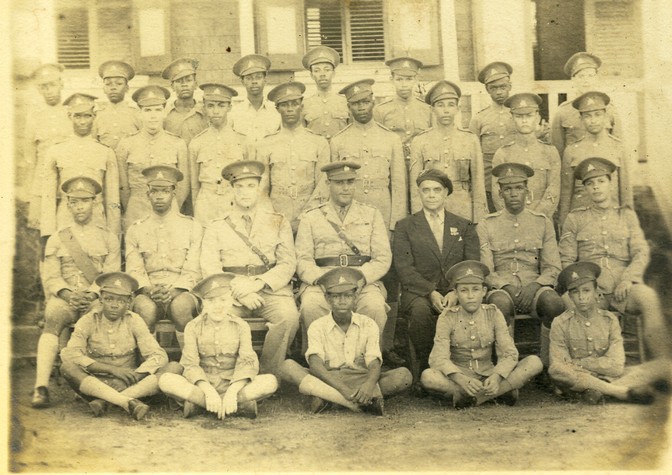
It was as Education Officer that Matheson first made an impact. He was appointed to that position in 1947. The primary schools of the Presidency were housed in old rented church buildings which had undergone little or no modification in the previous thirty years. Under Matheson’s guidance, old structures were replaced by modern buildings and new ones were added where necessary. These included the West End Primary School and the Valley Secondary School in Anguilla, the Gingerland Infant and Senior Schools, the New River Junior School and the Charlestown Secondary in Nevis and the Cayon and Molineux Schools in St. Kitts In a very short period 25% of the schools had been replaced or improved.
The teaching staff consisted mostly of untrained or pupil teachers. The head teacher of a school would recruit youngsters who had passed their seven standard certificate and give them a class to manage. Fewer than three teachers a year were sent abroad for training. Student were taught by rote, often under the fear of the whip. At the same time the new teacher struggled to study to pass an examination set every year for November. The situation was a difficult one. It had not changed much in over a hundred years and it was going to take a great deal of determination and resourcefulness on the part of the person who had to deal with it.
Matheson made it his mission to revitalise education in the Presidency of St. Kitts-Nevis-Anguilla. His solution was the Primary School Intending Teachers’ Programme which provide three year scholarships in the Grammar School and the Girls High School to the students with the best passes in Seven Standard Certification. On graduation, the students were bound to teach in an elementary school. Facilities for further training were identified in Antigua, Trinidad, Jamaica, Puerto Rico and the United Kingdom and bursaries made available for those willing to take the next step. An annual Easter Vacation Course for all teachers enhanced the skills of those already in the profession.
Speaking to teachers Matheson told them that "good teachers set high standards and hold high expectations and the pupils realize that the person at the black-board is their partner in possibilities.” Writing to him from her retirement in England, Mary Pickard, former Head Mistress of the Girls’ High School said, “I have felt that educational policy for St. Kitts was safe as long as you were at the helm.”
In the class room there was a scarcity of teaching material. The curriculum left much to be desired and Matheson felt it was time to widen and enrich it. Handicrafts, home economics and agriculture gained prominence in the schools and Matheson went as far as to insist that the first deputy head of the Charlestown Secondary should be a graduate of the Imperial College of Tropical Agriculture. Film shows after school hours compensated for the limitations of life on a small island. Matheson took the cine-projector, the epidiascope, the tape recorder to the schools and used them effectively as teaching aids and then trained some teachers to use them.
Matheson’s love of history did not end when he left the classroom. His profound interest in the subject lead him to look at the unwritten story of the man in the street and the things that mattered to him. At a time when most people with his educational background were scorning the Christmas Sports. Matheson saw a tradition built on the skills, talents and pride of the common folks. Matheson saw the potential of this folk activity and tried to organise it into one fabulously picturesque display at the park on New Year’s day. However the diminishing numbers of practitioners who emigrated in search of work during the 1940s and 1950s could not sustain all the Sports or even the annual parade. Matheson never lost interest and, when much later, in 1983, Okolo Tegramentine Arts Theatre was launched, he wrote a booklet sharing the information he had on the Sports with the members of the group and the interested public. By then the newly independent St. Kitts-Nevis was searching for an identity to present to the global community and the Christmas Sports became an integral part of it.
During a trip to Trinidad, Matheson found the steel pan. He liked it and brought one to St. Kitts and made it available for interested persons to try.. Among those who first played it was Cromwell Bowry who was soon able to tune other drums and before long bands like Casablanca, Invaders and Wilberforce rivaled each other on the streets of Basseterre on j’ouvert morning. In the late 1940s and early 1950s a vibrant Amateur Steel Band Association was in a position to organise performances in St. Thomas, USVI.
Matheson was not daunted by hard work and his fine temperament allowed him to take things in his stride even as more duties and responsibilities came his way. His firm yet diplomatic manner produced results. In the 1950s he serves as Chairman of the Tourism Committee. He also served as income tax commissioner, Chairperson of the Water Board and was a member of numerous committees dealing with Social Welfare, Health, Libraries, and Economic Development. From 1952 to 1955, Lloyd Matheson was appointed as Senior Administrative Secretary and from time to time he was called upon to act as Administrator.
Following retirement from the Civil Service, Lloyd Matheson turned his attention to S.L. Horsford and Company Ltd. He held the post of Joint Managing Director from the 26th April 1955 till the 30th September 1976 then continued to serve on the Board as non-executive director till the 30th September 1995. He was a founding member and director of Ocean Cold Storage, and St. Kitts Masonry Products, one of the original subscribers to St. Kitts Breweries and served on the Board of Marshall Plantations.
In 1965, when the Society for the Restoration of Brimstone Hill was incorporated there was little interest in the restoration of the fortress. Many saw it as a relic of colonialism. Lloyd Matheson saw potential, a historical site to be enjoyed by Kittitians and visitors alike. He and his Council of Management, together with numerous volunteers worked tirelessly to find funding from a variety of sources. Even on business trips for his company the Hill was not forgotten. Their efforts made a number of modest improvements possible in preparation for the royal visit of 1966.
When in 1967 the Caribbean Conservation Association was formed, Lloyd Matheson was its first treasurer. His experience, contacts and energy set the fledgling regional body on the path to excellence. It also gave him the opportunity to promote what was to become his ‘magnificent obsession” - Brimstone Hill.
The Society for the Restoration of Brimstone Hill felt secure enough in 1971 to attempt a major restoration. The Prince of Wales Bastion was in fairly good condition and it became the focus of restoration at the Fortress. Once the project was completed, Matheson felt that it was time for some high profile publicity. At the invitation of Premier Robert Bradshaw, Prince Charles was asked to open the restored bastion.
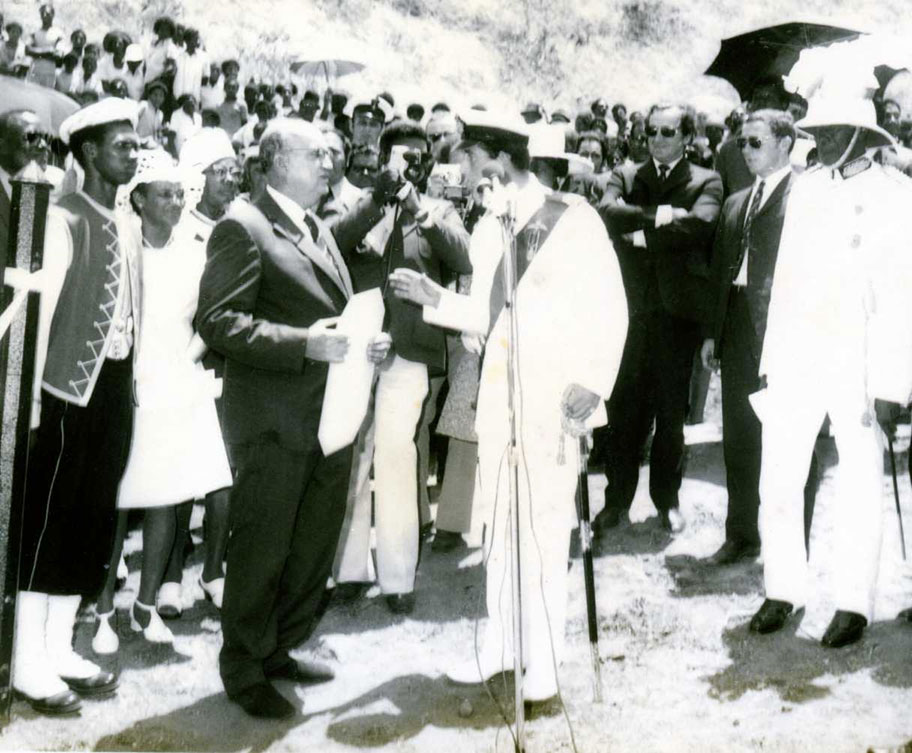
Elaborate preparations were made for the celebration of the 350th anniversary of the arrival of Thomas Warner in St. Kitts. A memorial service held at Middle Island became the target of a one-man demonstration by Washington Archibald and Matheson’s booklet The Thomas Warner Story written to commemorate the occasion, came under fire in local circles where Black Power and anti-colonialism had become strong ideologies. Deputy Premier and Minister of Finance, Trade, Industry, Development and Tourism defended the posture taken by the administration. Let it be clearly understood that while we can change the course of history for the future, we cannot and should not change the facts which constitute the history of the past.
It was with this in mind, that the Society for the Restoration of Brimstone Hill continued to make progress, restoring the Citadel, Officers’ Quarters, Kitchens, Bastions and Parade ground. Matheson also started accumulating publications, maps and prints in the hope that they can be used in a museum at the fort.
The passing of the National Conservation and Preservation Act of 1987 gave the society a great deal of autonomy and that same year it was legally reconstituted as the Brimstone Hill Fortress and National Park Society. Under this impetus, Matheson and the society wrote a proposal to have Brimstone Hill nominated by UNESCO as a world heritage site of universal value but as the matter should have been submitted by Government, very little progress was made at this time. Matheson retired from the presidency of the Society in 1989 and he was succeeded by Victor Smith who rewrote the proposal, incorporating Matheson’s initial ideas and additional information that had come to light through his own research. In 1990, by special resolution, the Council of the Society declared Donald Lloyd Matheson, President Emeritus for life and named the new visitor’s centre on the Hill in his honour. Matheson continued to attend meetings of the Council and even frequent the office and finally in 1998 a new proposal was made to UNESCO. It took into account all the new requirements that the international organisation had put in place with regards the management, regulation and related legislation of a heritage site. The Society also ensured that information relating to the presence of slaves on the Hill was also included in its new proposal. This widened its claim that the Hill was a site of universal value.
D. Lloyd Matheson died on the 25th August 1999. The following year UNESCO placed his beloved Fortress on its Heritage List.
National Archives
Government Headquarters
Church Street
Basseterre
St. Kitts, West Indies
Tel: 869-467-1422 | 869-467-1208
Email: NationalArchives@gov.kn
Website: www.nationalarchives.gov.kn
Follow Us on Instagram

